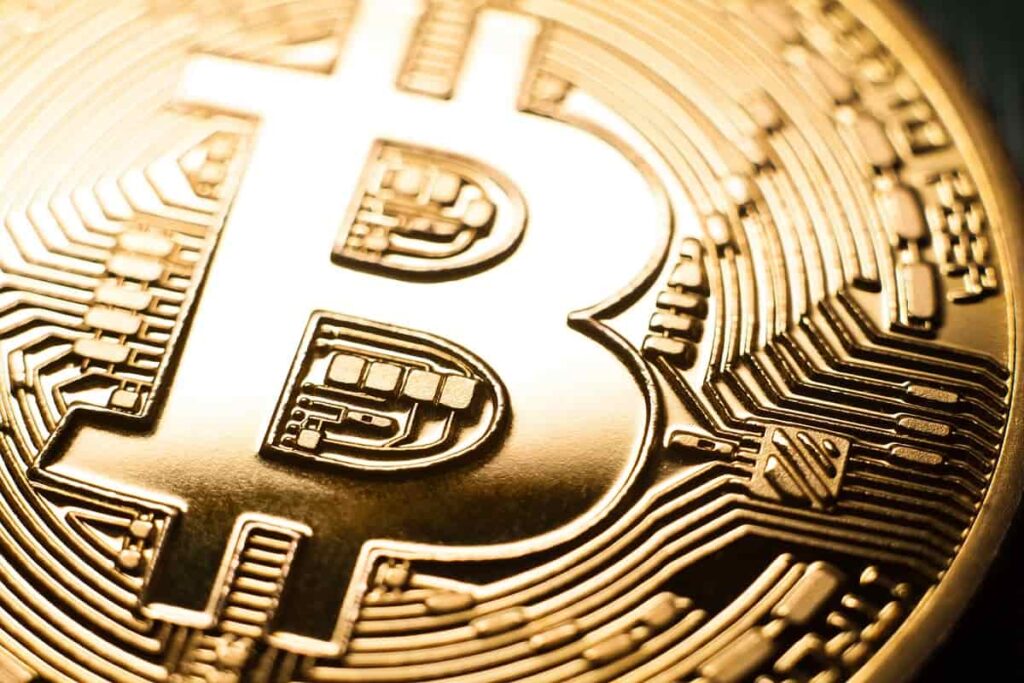Circle Stock: Blockchain-Powered Financial Services
Table of contents

Blockchain as a technology isn’t risky, it’s the products being built on the blockchain that are. Look no further than ICOs and NFTs, two manifestations of blockchain that epitomize greater fool theory. While cryptocurrencies might be deemed risky in much the same manner, they tend to be seen as “less risky” given strong institutional support. Nonetheless, if blockchain’s spawn have been excessively risky, then that risk is further exacerbated when offered to the public in a special purpose acquisition company (SPAC) package.
One of the largest players in the blockchain space, Circle, has recently decided to go public using a SPAC called Concord Acquisition Corp (CND). Without saying much more, we can conclude that what we’re going to talk about today is an extremely risky stock. We’re risk-averse investors, and we want to quickly touch on why that’s more important now than ever.
Taking on Less Risk
In our portfolio of 33 tech stocks we’re holding about 25% in cash, something that points to our risk aversion. When you consider that our entire tech portfolio – cash and all – only constitutes about 20% of our total assets under management (AUM), you may think we’re being too risk averse. The truth is that we’re scared shtickless right now, and here’s why. Take a look at the below chart which shows the 30-year performance of the Nasdaq.

The blue arrow points to a time twenty years ago when just about everyone was buying stocks just as fast as they could, and it was literally impossible not to make money in the market trading stocks that were largely worthless (meme stocks anyone?). The red arrow points to a red X which denotes the market’s reaction to a pandemic that decimated trillions of dollars in economic value globally, one that still persists today. And that little green flag in the upper right-hand corner of the chart? That’s where we are today. So forgive us if we start this whole conversation out by saying that Circle is not a stock we’re going to be investing in.
About Circle Stock
Founded in 2007, Bahstun’s own Circle has raised $711 million in disclosed funding to help businesses of all sizes “harness the power of digital currencies and public blockchains for payments, commerce and financial applications worldwide” with some Robinhood-like “raising global economic prosperity” shtick thrown in for good measure. The flagship product offering from Circle is USDC, the world’s leading digital dollar stablecoin. (A stablecoin is a cryptocurrency that’s pegged to another currency, in case of USDC, the U.S. dollar.) There are around $27 billion in USDC circulating which are backed by “US dollar denominated assets held on behalf of USDC holder,” the balance of which is audited monthly by a top 5 accounting services firm.

You cannot just create a cryptocurrency, peg it to the U.S. dollar, and then start paying a higher interest rate on deposits than banks do on actual dollars, can you? (Checks notes.) Turns out you can, and that’s what Circle has done using “professionally managed fixed-rate asset allocation in the crypto market.”

If using returns generated in the crypto market to pay a higher interest rate than anywhere else sounds like a Ponzi scheme, that’s because you don’t understand the brave new world of centralized finance or CeFi. That’s where lenders loan money to borrowers using cryptocurrencies as collateral, and it’s something that Circle is teaming up with Genesis to offer.

In reality, these firms are extending loans to people using collateral that only has value if there’s a greater fool to buy it. What happens if this whole house of cards comes tumbling down? The answer is it won’t, because this is “a new generation of financial services and commerce applications that hold the promise of raising global economic prosperity through the frictionless exchange of financial value,” something we’re just not able to wrap our small minds around.
Frictionless Finance
There’s something to be said for the “frictionless transfer of value” that Circle talks about, but isn’t that what the big payments firms – Square, Adyen, PayPal – are already doing? The Circle investment deck seems to address this with reference to “the Circle advantage: digital-asset macro tailwinds with deep treasury and payments integration.” Here’s the obligatory Venn diagram which makes things clear as mud.

Jokes aside, we’re not really picking up what they’re putting down, not to mention the extreme levels of regulatory risk they’re facing in their quest to become “the first digital currency native commercial financial institution.” If you have a really strong magnifying glass, you can read some of the risk factors from their deck such as:
- We and our yield product customers are exposed to the credit risk of Genesis
- Our yield product is collateralized primarily by Bitcoin and the value of that collateral is directly exposed to the high volatility of Bitcoin
- Certain large customers provide a significant share of our revenue
That first bullet point should be most concerning, especially if you’re old enough to remember what happened the last time Wall Street started bundling and burying credit risk under thick layers of financial complexity. Recently, Michael Burry – the man who played Christian Bale’s Big Short character in real life – warned that crypto and meme stocks will lead us to “the mother of all crashes.” If he’s right, is Circle a stock you want to be holding when that bomb goes off?
Should I Buy Circle Stock?
Let’s say that the Nasdaq slides back down to where it was when the market started panicking about The Rona back in March of 2020. For the Nasdaq to reach that point again, it would need to fall about -53%. It’s not unreasonable to think that the Nasdaq could test that low again should some economic crisis happen. If it does, stocks like Circle won’t fall -53%, they’ll fall a whole lot more. That’s because stocks that are riskier than most will fall further in much the same way they rise further. That’s why finance people often describe risk as “the volatility of returns.”
If there’s a market crash and blockchain/crypto stocks fall -75%, there will obviously be some bargains to be had amongst the leaders. Would companies like Coinbase and Circle fit that bill? Well, with proper regulatory filings we might be able to make a judgement call regarding this. If such a market event were to take place, we’d be equally concerned that companies like Circle might end up in a real world of hurt. You’d have to have titanium balls the size of watermelons to invest in this company right now considering how overvalued it is based on our simple valuation ratio.
- Implied Market Cap / Q1-2021 Revs Annualized
$5,415 million / $69.2 million = 78
We won’t even consider investing in a stock with a valuation ratio over 40, no matter how great the story is. Even if the company does manage to hit their lofty 2021 revenue target of $115 million, it’s still too rich for our blood. By the way, at least Circle was kind enough to provide their investors with quarterly revenue forecasts so someone’s feet can be held to the fire.

Conclusion
As investors take on more and more risk, we find it increasingly important to be risk averse. Sure, we might be missing out on some upside, but that accusation is usually leveled by people who have never felt true pain in their portfolios. As we put the finishing touches on our Nanalyze Premium subscription product, we’re now moving on to build our dividend growth investing product – Quantigence. It’s where the majority of our capital lies because it’s a strategy that’s weathered five recessions. Soon, it may need to weather a sixth.
Sign up to our newsletter to get more of our great research delivered straight to your inbox!
Nanalyze Weekly includes useful insights written by our team of underpaid MBAs, research on new disruptive technology stocks flying under the radar, and summaries of our recent research. Always 100% free.
















USDC is built on Ethereum and other emerging public blockchains.
Wondering what will perform better in the next 5 years: Circle or Ethereum ?
Apples to oranges comparison here. Both are exceptionally risky.